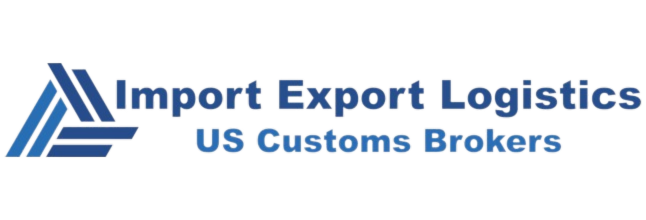“On April 2, U.S. President Donald Trump announced new ‘reciprocal’ duties on imports from 185 countries. Citing the new tariffs, J.P. Morgan became the first major Wall Street institution to forecast a U.S. recession in the second half of 2025, indicating that in addition to higher inflation, the tariffs would likely result in rising unemployment and slower growth. The prediction follows the first contraction in U.S. factory activity of the year during the month of March – a trend that also occurred in Asia with Japan, South Korea, and Taiwan displaying falling factory activity.
Read also: Global Economic Shifts Amid U.S. Tariff Measures
In addition to these indicators, inventories have reached their highest levels since 2022, indicating stockpiling amidst tariff uncertainty. Measures of distressed debt increased worldwide to their highest levels in 15 months. Moody’s estimates that global default rates could rise to 8% over the next year from under 5% at the start of April.
With more than $43 billion (€37.9 billion) in bonds and loans reaching rates that will make it harder for companies to refinance, it is expected that many companies will need to restructure via bankruptcy or through other methods outside of the courts. Everstream Analytics data shows that plant closures, insolvencies, and layoffs in the United States have more than doubled in the first quarter of 2025 compared to the first quarter of 2024.”

Automotive and agriculture sectors to see the heaviest immediate impacts
“Automobile manufacturers within and outside of the U.S. have faced targeted tariffs and responded with layoffs, plant closures, and production stoppages as they try to absorb new costs. Even prior to the announcement of country-specific tariffs, the Trump administration announced a 25% tariff on automobiles from April 3. The sector also faces heavy exposure to 25% tariffs that were placed on steel and aluminum imports from March 12.
AGP Group, an automotive glass manufacturer, cited tariff-driven uncertainty as part of its motivations for closing its plant in Nuevo Leon, Mexico, while original equipment manufacturers (OEM) like Stellantis N.V. and General Motors Co. have enacted production stoppages amidst rising costs.”
Company responses to tariff measures:
| Company | Tariff Response |
| AGP Group | Plant closure in Nuevo Leon, Mexico |
| Stellantis N.V. | Layoffs at five U.S. locations
Production halts in Windsor, Canada and Toluca, Mexico |
| COMPAS Automotive Group | Layoffs at plant in Aguascalientes, Mexico |
| Volkswagen AG | Temporary export pause to the U.S. |
| Jaguar Land Rover Automotive Plc | Temporary export pause to the U.S. |
| Nissan Motor Co., Ltd. | Temporary export pause to the U.S.
Production halt at plant in Fukuoka, Japan |
| Mitsubishi Motors Corp. | Temporary export pause to the U.S. |
| General Motors | Production halt in Ingersoll, Canada |
| Haas Automation, Inc. | Production reduction in Oxnard, U.S. |
| Canada Metal Processing Group and subsidiaries | Layoffs in Canada |
| Algoma Steel, Inc. | Layoffs in Canada |
| Heiko | Layoffs in Canada |
| Novelis, Inc. | Plant closure in West Virginia, U.S. |
Table 1: Automotive OEM and supplier responses to tariff measures as of April 16 (source: Everstream Analytics).
Sectors dependent on Asian electronic components to see price hikes
“Although impacts to automotive and agriculture are most clearly visible, all industries with complex supply chains like aerospace, electronics, and medical devices that have a heightened exposure to Asian suppliers will feel significant price increases. China’s new export controls on rare earth elements and permanent magnets vital for electronics, semiconductors, renewables, medical devices, and automotive and aerospace components will further strain supply chains. Given China’s control of 69% of rare earth production and 90% of rare earth processing capacity, manufacturers may face supply crunches to critical components that could disrupt manufacturing operations.”
| Mineral | Common Uses |
| Dysprosium | Permanent magnets (Neodymium-iron-boron) used in computer hard drives and semiconductor manufacturing equipment; laser materials; lighting technologies |
| Yttrium | Color displays (critical for brightness, efficiency); high-temperature superconductors; yttrium-aluminum garnet (YAG) lasers; coatings for semiconductor manufacturing (plasma chambers) |
| Gadolinium | Permanent magnets used in microphones, speakers, and vibration units; color displays and backlighting; magneto-optical storage media |
| Terbium | Color displays (red & green colors); Permanent magnets used in microphone, speakers, and vibration units; batteries (longevity, efficiency); LED lighting; semiconductors (to change conductivity) |
| Lutetium | Batteries; lasers; optical amplifiers; scintillators; semiconductors (doping agent in manufacturing processes) |
| Scandium | Aluminum alloying agent (semiconductor packaging); electrical conductors; high voltage transmission systems; 3D printing applications; Lithium-ion batteries; semiconductors (doping agent in manufacturing processes); metal-oxide-semiconductor field-effect transistors |
| Samarium | Samarium-cobalt magnets used in audio devices, smartphones, communication systems (sound quality), high-precision sensors, and vibration motors; RF front-end modules, RF applications; Wi-Fi modules; semiconductors |
Table 2: Common electronics, semiconductor sector uses of rare earth elements included in China’s April 4 export controls (source: Everstream Analytics).
Small companies will find it hardest to compete globally
“Regardless of sector or country, small businesses are likely to suffer the most severe financial impacts from tariffs. The Russell 2000, which tracks shares of small businesses, fell by over 20% due to expected import costs, outpacing declines seen in bigger firms. An employment tracker published by accounting software firm Intuit QuickBooks revealed that layoffs have already begun to strike small businesses, with headcounts at U.S. firms with less than 10 employees falling by about 100,000 in March.”
